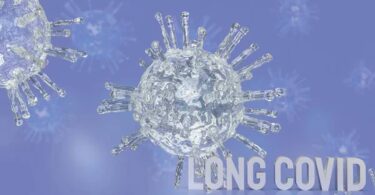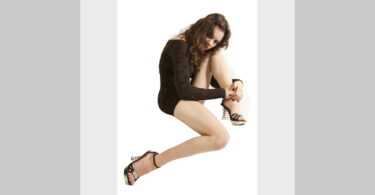Case: a girl with epilepsy diagnosed as West Syndrome and tetraplegia
She is a four-year-old gypsy girl. Her mother was an alcoholic, who lived with her husband in a camp in northern Italy. The family was expelled from Macedonia during the Balkan war. During the war all their children died or were killed. The mother got pregnant again during this heavy period and then gave birth to the girl after they had fled from Macedonia and lived in the Italian camp. They abandoned this child some time after birth, because she was paraplegic in all extremities and had epilepsy. Her disease was later diagnosed as West syndrome in an Italian hospital specialized in neurology. This is a special form of epilepsy, which is difficult to treat[i]. The little girl got a foster mother from the social welfare, but this woman also rejected her after some time because of the stench she emitted. Nobody wanted to bear with this little one, but then fate had mercy and sent her some good luck. A loving strong German woman living in Italy took pity on her and accepted her in her own family. After some months she brought her for consultation.
A pretty girl with coal-black hair and eyes. She can just crawl a little on her elbows, limply dragging her legs. She has strabismus. Left eye squinting outward and upward when she looks at people, and when she does not fix her gaze the eyes are rolling completely uncoordinated, quite like the balls in a lottery pot. It looks ghastly. An offensive stench soon fills the room. It smells like a mixture of sewage water and pig stable. Her mother says that her stool stinks even worse, and that she was always severely constipated, perhaps one stool a week. She sometimes eats sand, stones, hair, paper and threads of cloth. She frequently licks things. Likes to bite others, bites the cat. Very sensitive to noise. Aversion undressing. She has a strong aversion against milk and cannot digest it also. She is moody and has mood swings, which can turn from high to low and vice versa every 10 minutes. Her mother says that she likes yellow, but it was not possible to assess her color preference properly.
Analysis and follow-up
She was rejected and abandoned during the very first months of her life. This is a main theme of milk remedies. She dislikes milk and cannot digest it: another strong milk theme. The rapid alternation of moods can also indicate a milk remedy. There was violence during pregnancy, she was an outcast after birth, rejected and shunned by everyone. Even the first foster-mother expelled her. This is stage 17 or the syphilitic miasm (one could think of stage 16 or leprosy miasm also, because of the stench and begging attitude, which is 16). If we put this together, it suggests lac suilinum (two provings of lac-su strongly expressed the syphilitic miasm). This remedy is confirmed by her offensive smell, like of a pigpen.
She got Lac-suilinum MK, one dose per month.
From this very day she is making constant progress. The very first day after the remedy she had stools, constipation subsided and there were regular stools every day. During 3 weeks, the stench of stool and body lessened and became almost normal. She began to sing. Strabismus improved. She talks more, and the ability to move made a big step forward already during these first 3 weeks, even before taking the second dose. Formerly she was extremely moody. Now she is happy all the time and no more mood swings.
One year has passed. No more epileptic seizures. The mother has tapered and stopped all anti-epileptic medication on her own accord. She goes to a normal kindergarten and is accepted by her friends, can take up social contacts. She can move her arms normally. Her legs are still weak and she can stand only with the help of another person. During consultation she repeatedly tries to pull herself up by the door handle. The eyes stopped rolling, strabismus is gone. When she is alone she is more self-supporting, but in the presence of her mother she tries to attract help and pretends not to be able to do things. She is kind of begging and tries to use her handicap in order to get pity and support. She still eats indigestible things and sand when she feels unobserved. For example she eats the dry corn herself instead of feeding it to the chicken as she is supposed to. She loves to hear sad melodies. Then she is completely absorbed and weeps desperately, which she enjoys. As there seems to be a standstill in progress, I want to experiment and try some keynote prescriptions to see if more can be done. She gets single doses, in 4-week sequence, of Aur-i (sad music >, strabismus, cerebral remedy), Tarent (> music, eats sand, bites, neurological remedy), and Bell (violence in early childhood, epilepsy, biting, color preference yellow), and the mother informs per phone what happened: after Aur-i she had a little fever, then desire for sad music lessens, but no general effect. After Tarent she throws her hands up and claps when she hears music, jumps on the sofa and moves in new ways, rises to her knees and likes to climb as far as possible. She obviously enjoys moving. After Bell nothing further happens. Her stools again became irregular, but no stench.
One and a half years have passed, and Lac-su MK is given again. Constipation improves, and after 3 weeks she begins to express herself better, more logic in her thoughts and words, communication much better. Fantasy and imagination improve, she has many new ideas. Can stand with very little help. Pes equinus and spasmodic contraction in feet improve; she relaxes her feet soon after standing. She gets fever during influenza, which formerly was not so. She visits the ophthalmologist, who saw her 2 years ago, and he was very impressed to witness the coordinated eye-movements and general improvement. No epilepsy since 1,5 years now. It is clear that lac-su is best, but tarent has also done some good.
Two other short cases of Lac-su, confirming stage 17
We have seen 2 other cases of Lac-su in our practice.
One was a 9-year-old girl who was stealing money from her mother and played tricks with her; she played rather violent mischief with her mother regardless of consequences; towards others she can appear very nice. She is very clever and pretty, with an abysmal, penetrating gaze. The remedy was chosen because of the main milk issue: mother rejected her after birth (she refused to see the baby for one week and never nursed her) and stage 17 issues (stealing, playing tricks, violence regardless of consequences).
The other case was a girl masturbating shamelessly in front of her parents and family. She would put a soft toy (mostly an animal) between her thighs and do it with such intensity that she began sweating and her face became red. Many “well-indicated remedies” had failed, but lac-su helped her. She stopped it altogether and developed fine. This case was many years back, before any proving of lac-su was done or even milk themes were discovered. The remedy was just given as a last resort because she “behaves like a pig”. We have other cases of excessive masturbation cured with lac-cpr. They can be also very violent, but nevertheless there is sort of shame and some sense of decency; they just overreact. Lac-su displays shameless lust and heeds no issues of decency (stage 17).
Lacs (general themes of milk remedies)
- Ailments from abuse in early childhood, especially during the nursing period, and bad trouble with parents as a sibling (Mangialavori)
- Dependency; they demand care – DD muriaticum, Carbon-Series
- “Nursing” (milk is primary nourishment in mammals)
- problems in breastfeeding; breastfeeding was avoided or impossible; mastitis; child wants to be breastfed and rejects all other food.
- unsatisfied desires for being cared of.
- oral “ersatz”-enjoyments: pacifier, lollipop, sucking the thumb etc.
- Mamma: mastitis, ailments of (mainly female) breast.
- hormonal disturbance: PMS, gynecomastia etc.
- milk: desire, aversion or aggravation.
- General: > during pregnancy and breastfeeding, > after this period.
- Alternating symptoms. Being torn between two sides.
- Color preferences[ii]: warm colors, 8-10D (deep red), 4-5C (orange), also 11C-E (magenta and purple).
Stages of Lacs (provisory)
| Stage | Remedy |
| 1 | loxodonta? |
| 2 | humanum, ovinum |
| 3 | caninum |
| 4 | phoca-vitulina (seal) |
| 5 | felinum |
| 6 | equinum |
| 7 | delphinum, asinum |
| 8 | asinum? |
| 9 | acinonyx jubatus (cheetah)? |
| 10 | leoninum |
| 11 | lupinum |
| 12 | caprinum |
| 13 | |
| 14 | |
| 15 | vaccinum, defloratum |
| 16 | |
| 17 | suis, humanum? |
The arrangement in stages was done according to proving symptoms and retrospective analysis of clinical cases. This is a provisory order. Stage17 for lac suilinum was confirmed by this case. If we want to grade the remedies, we could give it 2nd grade and wait for more clinical confirmation. There are two more cases in Interhomeopathy December issue 2006 (http://www.interhomeopathy.org) confirming this system. Markus Kuntosch confirmed Lac leoninum in stage 10 by his case. Andrea Zarth confirmed Lac delphinum in stage 7 by her case. So we would ask you to use your own cases and help to develop this system accordingly. It is a promising approach.
Provings of Lac suis or Lac suilinum
There are two impressive provings by Stefan Kohlrausch and Kees Dam. Both provings showed features of cruelty, violence and brutality. Kohlrausch describes the remedy as highly syphilitic. The basic feeling is being abused, misused, outcast, unjustly condemned, or being abandoned. Many provers reacted with severe anger and hatred.
A third proving by Zeising and Neuhoefer showed a chaotic plethora of dreams, and some of these confirm the proving of Kohlrausch: “A horrible remedy” “A child is raped” “I am very upset” “Never again” – Deceit and treachery with hatred. Another theme was the discovery of treasures and jewelry (like Fluor).
In Dam’s proving one could see – apart from the general milk themes – symptoms like hyperventilation and tetany: fainting, vertigo with falling backward or forward, numbness of hands and twisting the fingers. Acute sense of smell, loathing of toilet smells. As if the face was pressed flat.
Summary
Apart from the great help that the child and mother derived from the remedy, the case can show us several other things:
- Themes and stages can be very useful to find a good remedy. They were the indications for the remedy in this case, and the repertory would have failed to show it.
- The stage or miasm differentiates the particular remedy from a group of similar remedies.
Jan Scholten discovered this system of finding remedies in 1994 and published it in 1996[iii]. He understood how the structure of the periodic table could be applied in homeopathy as series and stages. Rajan Sankaran applied the same idea to plant remedies and developed a kind of “periodic table for plants”, which he published in 2002[iv]. He used the themes of a botanical family in the same manner as the theme of a series and then differentiated by miasm or stage. The present lac suilinum case suggests that this system may be used also for animal remedies. The natural zoological family of mammals furnishes the group theme, and the stages can be used to differentiate one from the other. We have arranged the milk remedies accordingly. The remedy was chosen from this table.
[i] Wikipedia: “an uncommon to rare and serious form of epilepsy in infants. The syndrome is age-related, generally occurring between the third and the twelfth month, generally manifesting around the fifth month. There are various causes (“polyetiology”). The syndrome is often caused by an organic brain dysfunction whose origins may be prenatal, perinatal (caused during birth) or postnatal. Compared with other forms of epilepsy, West syndrome is difficult to treat. To raise the chance of successful treatment and keep down the risk of longer-lasting effects, it is very important that the condition is diagnosed as early as possible and that treatment begins straight away. However, there is no guarantee that therapy will work even in this case.”
[ii] “Colors in Homeopathy”, Narayana Verlag 2003. For attribution of colors and remedies please see under http://www.homeo.de/en/colorsInHomeopathyLists.html
[iii] “Homeopathy and the Elements” 1996, Jan Scholten, Utrecht
[iv] “An Insight into Plants” 2002, Rajan Sankaran, Bombay
———————————————-

He published two books: “Colors in Homeopathy”, Narayana Verlag 2003; “Handwriting and Homeopathy”, Narayana Verlag 2005. The color book is a practical repertory with 120 color tables and more than 700 remedies indicated by these colors. The handwriting book is no graphologic analysis but gives 750 script samples of cured cases indicative of 310 different remedies, with more than 100 clinical cases descriptions. You can read excerpts on the website of www.narayana-verlag.de
Ulrich Welte MD, Blumenplatz 2, 79400 Kandern, Germany.






West Syndrome is known in the United States as Infantile Spasms (IS). My daughter, who additionally has Down syndrome, had it at age 4.5 months and it was extremely difficult to diagnose. And it is peculiar to treat; some children never find a drug to help them. We were lucky; after the first dose of Prednisone, the seizures stopped. However, Cushings syndrome set in almost immediately and my daughter’s adrenals were shut down over 9 months of steroid use. We used homeopathy to detox the prednisone from our daughter’s system using prednisonium 6C and it did work, only it wouldn’t work during her use of steroids.
What is curious to me, and why this article was so thought provoking, was the fact that my daughter (and another child we know with IS) has some of the same symptoms of this little girl’s case: biting people, strabismus in her left eye, eyeball rolls upwards for no apparant reason, milk aggravates, eating sand/hair, placing things in her mouth first, weakness in the limbs…it is tempting to want to draw conclusions about IS and remedies; and begin questioning how much of my experience during pregnancy created the current symptoms in my daughter today.
Something tells me I better get back to a strong homeopath who can thoughtfully examine my daughter’s case because there are still many strange symptoms in my 3 year old. And just because the seizures stop doesn’t mean the underlying problem(s) were healed.
Thank you for your article. Warm regards,
Annie Kolatkar
San Diego, CA USA